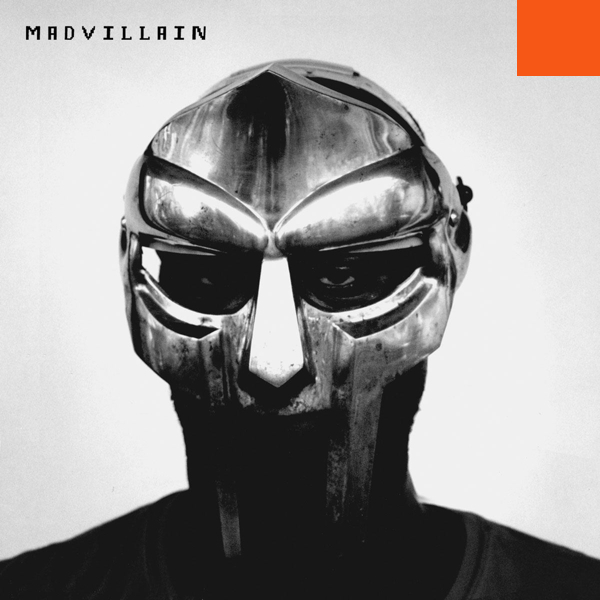One decade later, MF DOOM’s productive 2004 remains legendary

December 15, 2014
Emcee and producer MF DOOM is almost the perfect underground artist. The New York-based emcee is highly coveted by fans of the underground hip-hop scene as an ingenious producer and lyricist who never aimed to appeal to the masses. To mainstream or casual rap fans, the name “DOOM” may not bear any significance; to fans, the name evokes nostalgia and deep reverence for one of the genre’s most legendary – and mysterious – artists of all time. One decade later, MF DOOM is still perhaps best known for the high volume of phenomenal albums he released all within the year 2004.
The unpredictable DOOM began his hip-hop career in 1988 under the stage name “Zev Love X” with hip-hop group KMD. Though they saw moderate success, upon the death of KMD member and brother of DOOM, DJ Subroc, the group disbanded, and DOOM disappeared from hip-hop for over half a decade. In 1997, he re-emerged into the hip-hop scene under the new stage-name MF “Metal Face” DOOM. Throughout the rest of his career, he has adopted many other stage names such as King Geedorah, Metal Fingers and Viktor Vaughn, but has always been known for his name and his signature mask.
Ever since his re-entry into the hip-hop scene in 1997, DOOM is rarely seen without his trademarked mask, a modified version of the mask which Marvel Super-Villain “Dr. Doom” wears in comics. DOOM chose his name and act specifically to model the appearance of villain Doom.
Dr. Doom, after being orphaned at a young age and enduring severe facial lacerations later in his life, crafted a metal mask to cover his scarred face and vengefully swore to obtain world domination. The rapper DOOM has worn the mask ever since the death of his brother and, just like the villain, maintained his own “villain” act ever since Operation: Doomsday in 1999.
MF DOOM is not merely a character to the emcee; the act has become a lifestyle to him. DOOM maintains his character even off the stage, as his whereabouts are never public and he rarely gives interviews. Some may see this as curt, but in reality, this is exactly how DOOM maintains such allure today. Truly, no one parallels DOOM’s devotion to his craft.
DOOM spent 2004 hard at work on three records; these records would define his career. The first to come out in March of 2004 was Madvillainy, a collaboration album with renowned producer and close partner Madlib as the duo “Madvillain.” The album spans 46 minutes and runs 23 tracks long. Madvillainy has been regarded as one of the best albums of all time, with some of the best beats and most impressive word play hip-hop has ever heard. Madlib handles the entirety of the album’s production, masterfully combining a wide-range of samples, from accordions, to pieces of music from soul jazz musician Dr. Lonnie Smith, to samples of old Dr. Doom cartoons. The album experiments with a wide variety of sounds and styles of hip-hop without overdoing it, as only two songs run more than three minutes in length.
As for DOOM, his lyricism on the tape is thought provoking, humorous and downright impressive. His rap style, which includes a large and varied vocabulary as well as frequent multi-syllabic alliteration, is at its absolute peak on this record. Lines like “The van screeches, the old man preaches, bout the gold sand beaches/ the cold hand reaches/ for the old tan Ellesse’s, Jesus” off of “Meat Grinder” demonstrate some of hip-hop’s finest word play to date.
On other songs, DOOM raises some important points about religion and conflict. For example, on “Strange Ways”, DOOM raps “They pray four times a day, they pray five/ whose ways is strange when it’s time to survive/ some will go of they own free will to die/ others take them with you when they blow sky high,” pointing out the pettiness of religious conflict and its gruesome consequences. The words “masterpiece” and “perfect” are used too often to describe good music; if there were ever an appropriate record to label as such, it would most certainly be Madvillainy.
Later in August 2004, MF DOOM released a second album of that year under the alias Viktor Vaughn, a solo record titled Venomous Villain. The album is a sequel to his critically acclaimed 2003 record Vaudeville Villain, which he also released under the Viktor Vaughn moniker. The album runs only 33 minutes long, a total of 12 tracks long. Like the first album, there is no DOOM production, only a number of old comic book cartoon samples. The beats on the album have a darker undertone, similar to what listeners heard on the first Viktor Vaughn record. DOOM one-ups his impressive lyrical prowess on the album with more menacing verses, such as “Yolk em, leave ’em with his feet dangling/ got his degree in stranglin’ and street haglin’” on “Ode to Road Rage.” Though the record is certainly not the highlight of the year, Venemous Villain contains some classic DOOM bars and respectable instrumentals.
Finally, DOOM released the charming MM..Food in November of 2004—an album produced nearly entirely by himself. Those disappointed by Vaudeville Villain were surely reassured with this DOOM record, which contains the same boom-bap, sample-oriented, up-tempo beats DOOM produced on his debut album Operation: Doomsday. The album is centered on food in all aspects, with songs named after food like “Beef Rapp” or “Kon Karne,” metaphors about food and food-related samples. DOOM is again marvelous in his rapping ability, carrying his witty wordplay throughout MM.. Food. Interspersed between certain songs on the 49-minute album are numerous interludes with samples from Frank Zappa programs, Sesame Street and more cartoons like Fat Albert. MM.. Food is not merely superb because of DOOM’s refreshing production or lyrics, but the album also follows its food theme throughout to make for a genuinely cohesive, classic DOOM record.
MF DOOM elevated himself to a higher level with his active 2004, single-handedly creating new hip-hop fans all over. Despite his large underground following, DOOM never met the mainstream—which is exactly how he would like it to be. His underground success has allowed him to make music how he wants and continually satisfy eager DOOM admirers.







